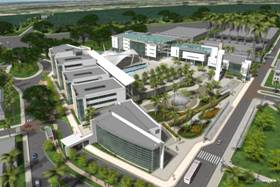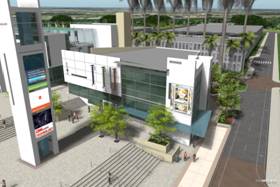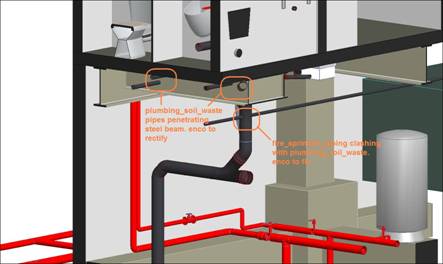BOSTON, July 1, 2008 – Construction has begun on one of the first university campuses entirely designed and constructed using building information modeling (BIM) technology.
The University of Trinidad and Tobago project involves the master planning and construction of a central university campus on a 150-acre green field site within a former World War II US Air Force base. Architectural and urban planning firm acla:works architects won the award to design the new university in late 2004.
The central campus comprises a large open-air landscaped plaza flanked on three sides by facilities that include the library learning commons, 400-seat auditorium, classrooms, lecture halls, labs, cafeterias, administration offices, graduation pavilion and information tower together with a remote central plant designed to serve the wider campus.


Acla:works, a long-time user of Graphisoft Archicad, challenged the entire team of consultants to adopt a comprehensive, integrated virtual building and construction approach using BIM due to the sheer scope of the project. The team engaged Martin Fischer of Stanford University’s Center for Integrated Facility Engineering (CIFE) to conduct an introductory workshop. The team also consulted with Finnish building design services expert Reijo Hanninen of Olof Granlund Oy, and completed a variety of on- and off-site training courses in VICO Constructor and VICO Estimator and Control software.
The project comprises 21 sub-projects, all managed using the Archicad engine to coordinate architectural, structural and civil engineering activities. It integrates a variety of tools and technologies including TEKLA structures, MEP engineering using VICO Constructor, quantity surveying using VICO Estimator and project management using VICO Control. The team also uses SOLIBRI to check for conflicts between the various models and to ensure accurate coordination between the models prepared by all the consultants.

“Archicad not only provided a platform for greater visualization for the client and designers, it has become the repository of a fantastic amount of information coordinating the designs of all disciplines,” said Brian Lewis, director at acla:works. “This has been a serious investment of our intellectual property and will have a profound impact on the way we will be working in the future. Buildings have become so complex that it has become mandatory to use a BIM modeling process to ensure accurate coordination and greater collaboration by the many consultants involved in today’s sophisticated building projects. We applaud the other consulting firms’ investment and willingness to adopt our approach.”